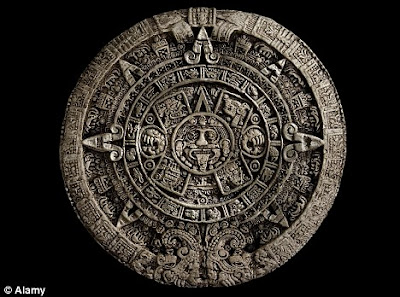 The end? The Aztec Mayan calendar that predicts the world will end in December
The end? The Aztec Mayan calendar that predicts the world will end in DecemberDeep inside a secret room buried for eons within an ancient stone temple in Mexico, something dark and terrible has finally stirred.
Or so the doomsayers, with their vivid imaginations, would have you believe.
The sands of time are running out for the world and not even Indiana Jones can save us now.
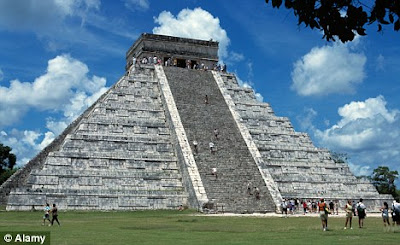 Ancient: The stone temple that houses a secret room home to astrological theories in Chichen Itza, Yucatan, Mexico
Ancient: The stone temple that houses a secret room home to astrological theories in Chichen Itza, Yucatan, MexicoThe astrological alignments and numerological formulae cannot be wrong: on December 21 this year, the apocalypse foretold 5,125 years ago by the ancient Mayans will come to pass and the world will end.
Of course, it’s fair to say predictions of Armageddon are two a penny.
Harold Camping, an American radio preacher, got thousands of followers worked up when he predicted the Second Coming of Jesus Christ on May 21 last year.
When that didn’t happen, he said the world would end on October 21. And then he quietly retired from his radio show.
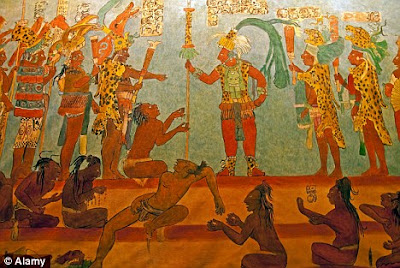 A mural at Antigua's Casa Santa Domingo Convent is a replica of one at the ancient site at Bonampak, Mexico
A mural at Antigua's Casa Santa Domingo Convent is a replica of one at the ancient site at Bonampak, MexicoBut the ‘2012 phenomenon’ — as it is commonly known to its legions of internet followers — is different.
For the Mayans, a famously wise and advanced civilisation which was at its height between 250 and 900AD in the present-day Mexican state of Yucatan and Guatemala, have grabbed everyone’s attention.
The evidence boils down to one simple fact: their 5,125-year calendar — the one used across Central America before the arrival of Europeans — runs out on December 21 this year.
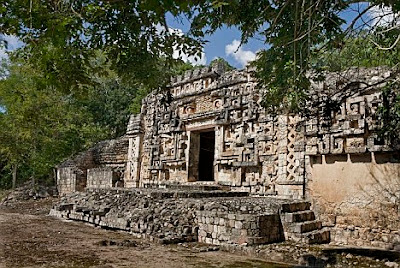 Archaeologists who have studied the Mayans have been downplaying the apocalypse theories over the years. Picture: Mayan ruins at Hochob, Campeche, Mexico
Archaeologists who have studied the Mayans have been downplaying the apocalypse theories over the years. Picture: Mayan ruins at Hochob, Campeche, MexicoThe point is that the Mayans were noted for their extraordinary astronomical observations and mathematical powers.
And if they didn’t think it worth taking their calendar beyond December 2012, they must have had a reason.
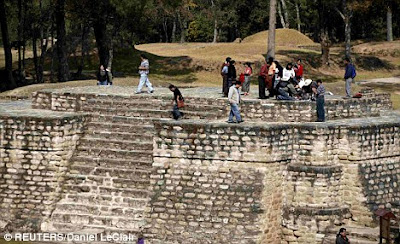 Sacred: Mayan priests prepare for a cleansing ceremony at the ruins of Iximche in the town of Tecpan, Guatemala
Sacred: Mayan priests prepare for a cleansing ceremony at the ruins of Iximche in the town of Tecpan, Guatemala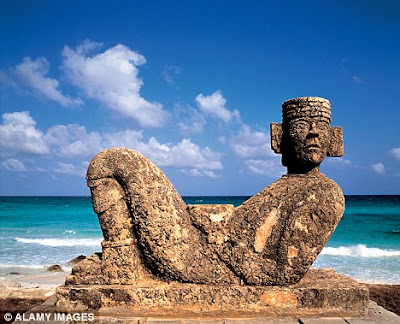 Artwork: A Mayan sculpture installed near a beach in Tulum, Mexico
Artwork: A Mayan sculpture installed near a beach in Tulum, MexicoMexico’s tourism agency hopes the 2012 phenomenon will draw 52 million visitors to the region — more than twice the number the whole country normally receives.
And the town of Tapachula, on the Guatemalan border, has already started a countdown to December 21 on a giant digital clock in its main park.
Quite what will happen on the day it runs out remains the subject of feverish debate around the world.
source: dailymail
No comments:
Post a Comment